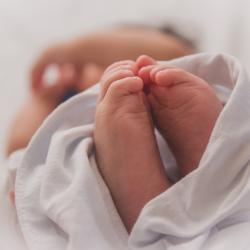How to Protect Yourself From Slips, Falls, and Trips During Winter and Fall
As we enter the final phase of the year, the temperatures continue to drop drastically, and depending on your location, you may even witness higher rates of rainfall, sleet, and snow. Winter makes the walkways, streets, and surfaces wetter. Hence, many people are more likely to sustain injuries from slips, falls, and trips.
The Centers for Disease Control and Prevention (CDC) reports that over 17,000 people die annually from slip and fall incidents. Similarly, the CDC said 15 percent of workplace injuries are due to falls and slips.
- From these stats, it is crystal clear that one does not need to fall from an extreme height to sustain devastating injuries.
“Outdoor lone workers are at a higher risk of fatal injury because there is no one to help them if they fall or trip while going to a client’s house. Workers sustain varying degrees of injuries such as broken ribs, back pains, fractured bones, and head cuts,” says injury attorney Matthew Aulsbrook. Falls, trips, and slips are the most common workplace injuries at this period.
However, employers and employees can mitigate them through some effective strategies highlighted below:
Safety Tips for Workers/Employees
- Try as much as possible to avoid slippery surfaces with leaves and ice
- Promptly and proactively notify your supervisor of any work area you feel is a trip, fall, or slip hazard
- Mop up any water you might have slushed or tracked in while entering a building, including ice and snow on your shoes
- Wear the right footwear to work—ice grippers are the best option for those working in wet and cold conditions
Safety Tips for Employers
- Provide adequate lighting for employees in work and high-traffic zones
- Ensure the sturdiness and safety of every banister and handrail
- Constantly monitor outdoor work and walk areas for slippery conditions—If there are any, swing into action to minimize the hazard, such as posting warning signs, salting icy walkways, and shoveling snow
- Review the previous year’s record of fall, slip, and trip cases to know where they happened and if the issue was fixed—highlight solutions to deal with the identified problem areas
- Design official protocols to implement when a worker faces a likely safety hazard
- Give employees the footwear and equipment needed to safeguard them
- Enlighten and train employees on policies around falls, trips, and slips during wet conditions
- Seek employees’ opinions on areas you can intensify to prevent breaches of safety at work
The Impact of Hazard on Your Team and Firm
Apart from the physical pains and emotional distress that employees undergo after a fall injury, it also leads to unproductivity, increased workers’ compensation cost, litigation expenses, overtime for available employees, and replacement costs.
Hypothermia and Frostbite
Although they are not fall or slip-related, frostbite and hypothermia also pose devastating concerns for workers during winter. Hence, you should know the signs of these conditions to know how to deal with them decisively.
The signs of hypothermia include slurred speech, fumbling hands, memory loss, shivering, lack of coordination, and drowsiness.
The signs of frostbite include numb and pale skin, muscle stiffness, blisters, and change of skin color.
If you or any of your colleagues experience these signs, quickly rush the individual into a warm room. Employers should make preparations for lone workers in remote areas to warm up if they experience these symptoms.
Worker Monitoring and Fall Detection System
As aptly stated above, you can activate different mechanisms to protect yourself and your team, especially the lone workers. Adopting an automated worker monitoring tool with fall detection and location tracking features is an ideal option to upgrade your safety and protection system. The tool gives you peace of mind and ensures everyone’s safety.
More to Read:
Previous Posts:







